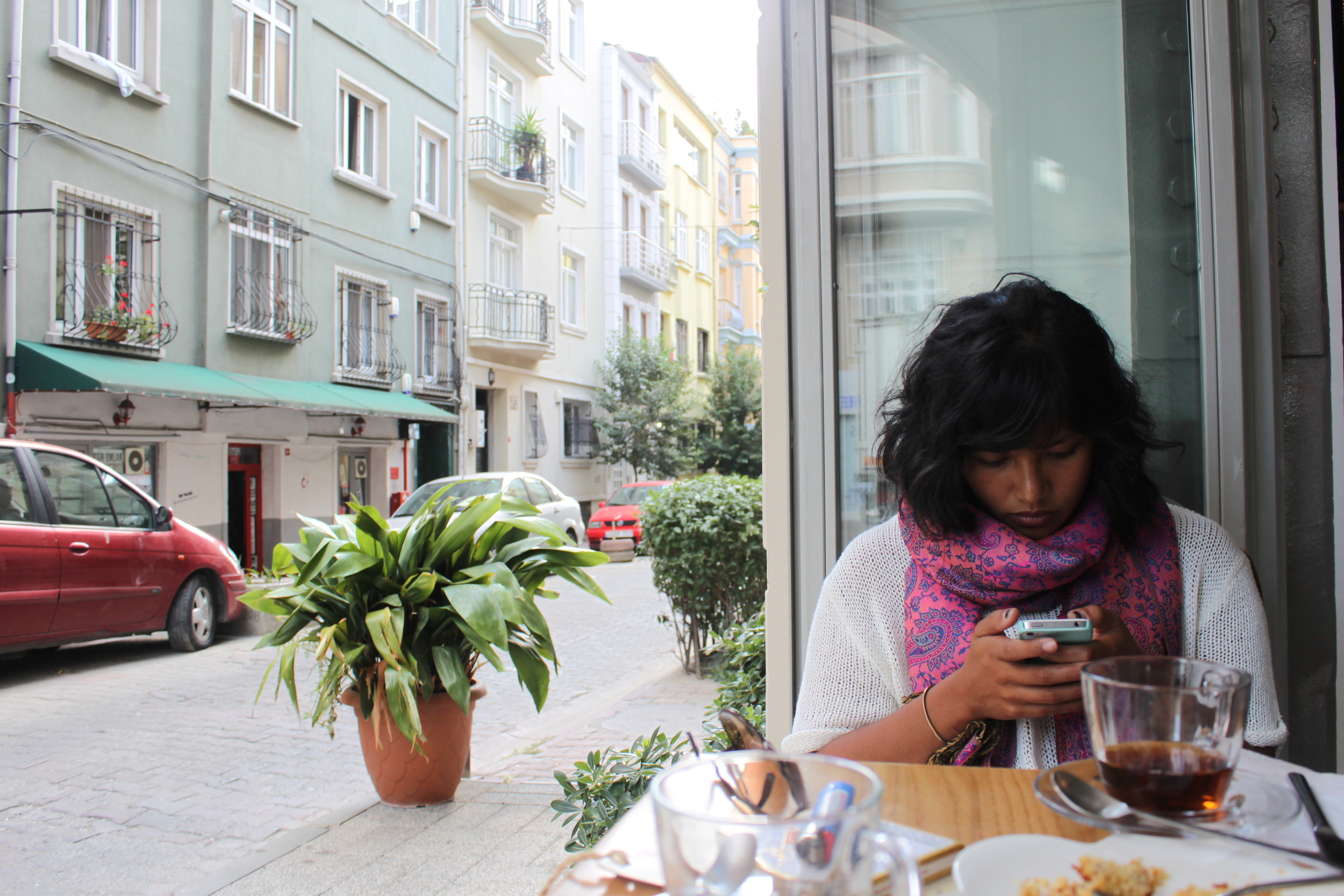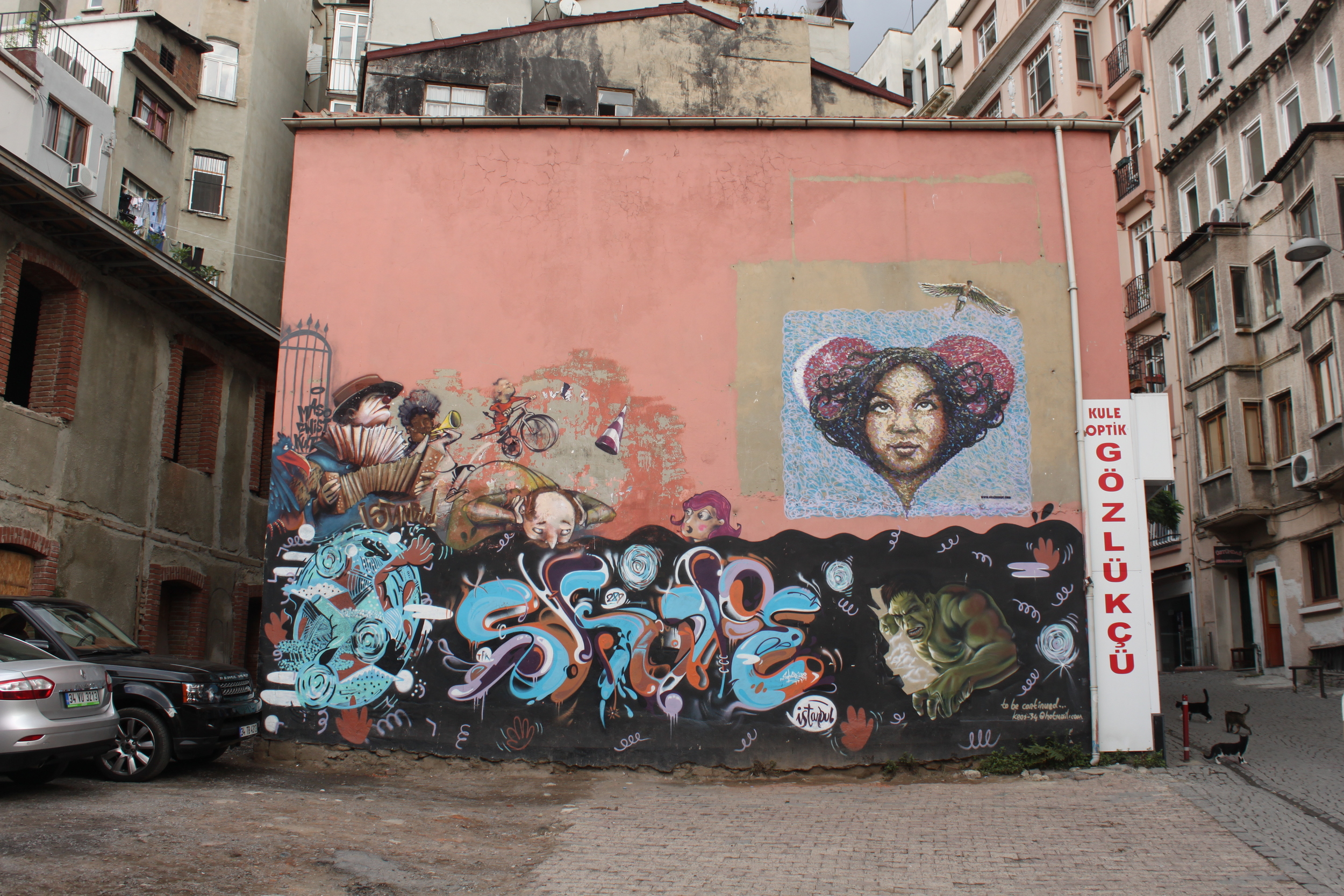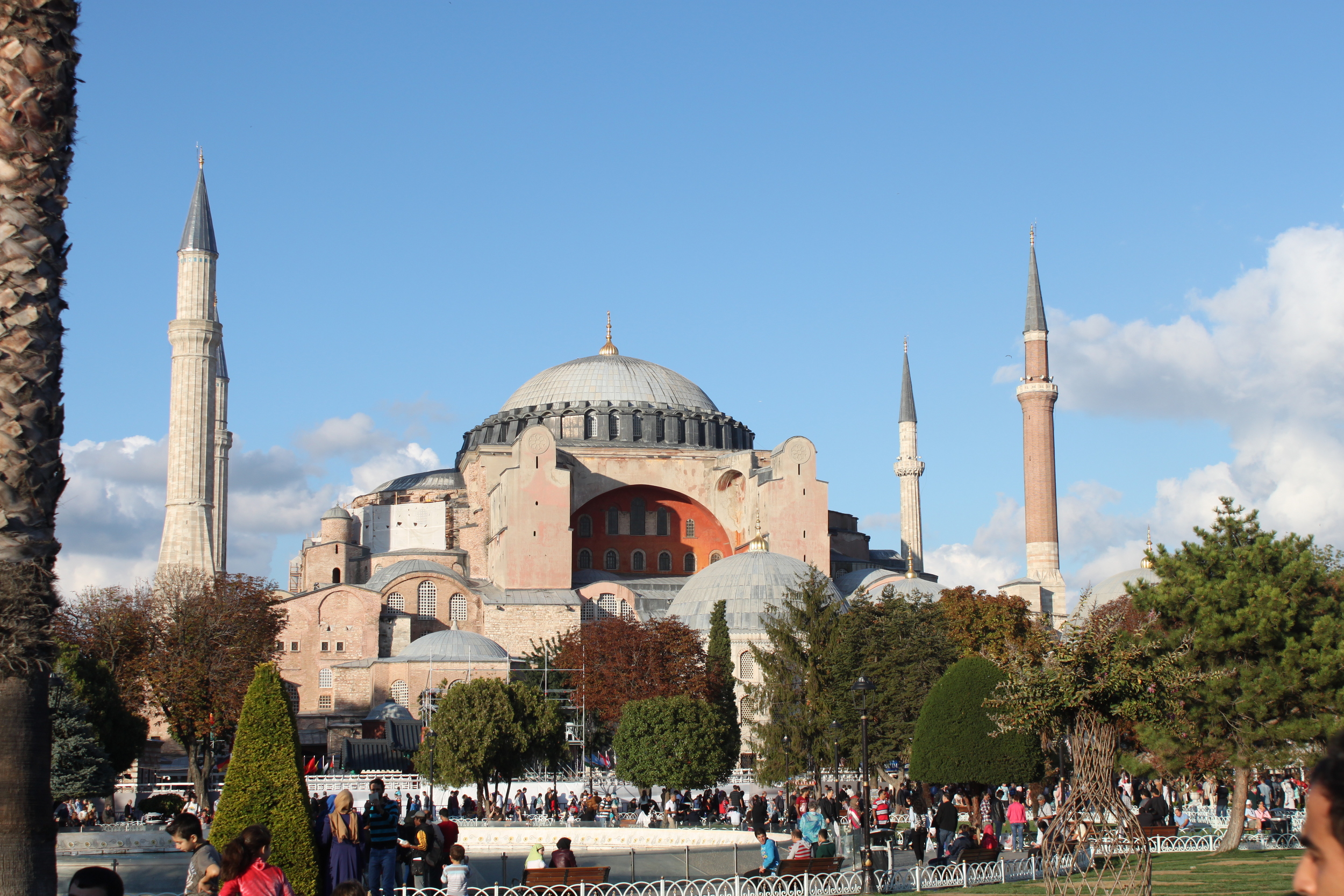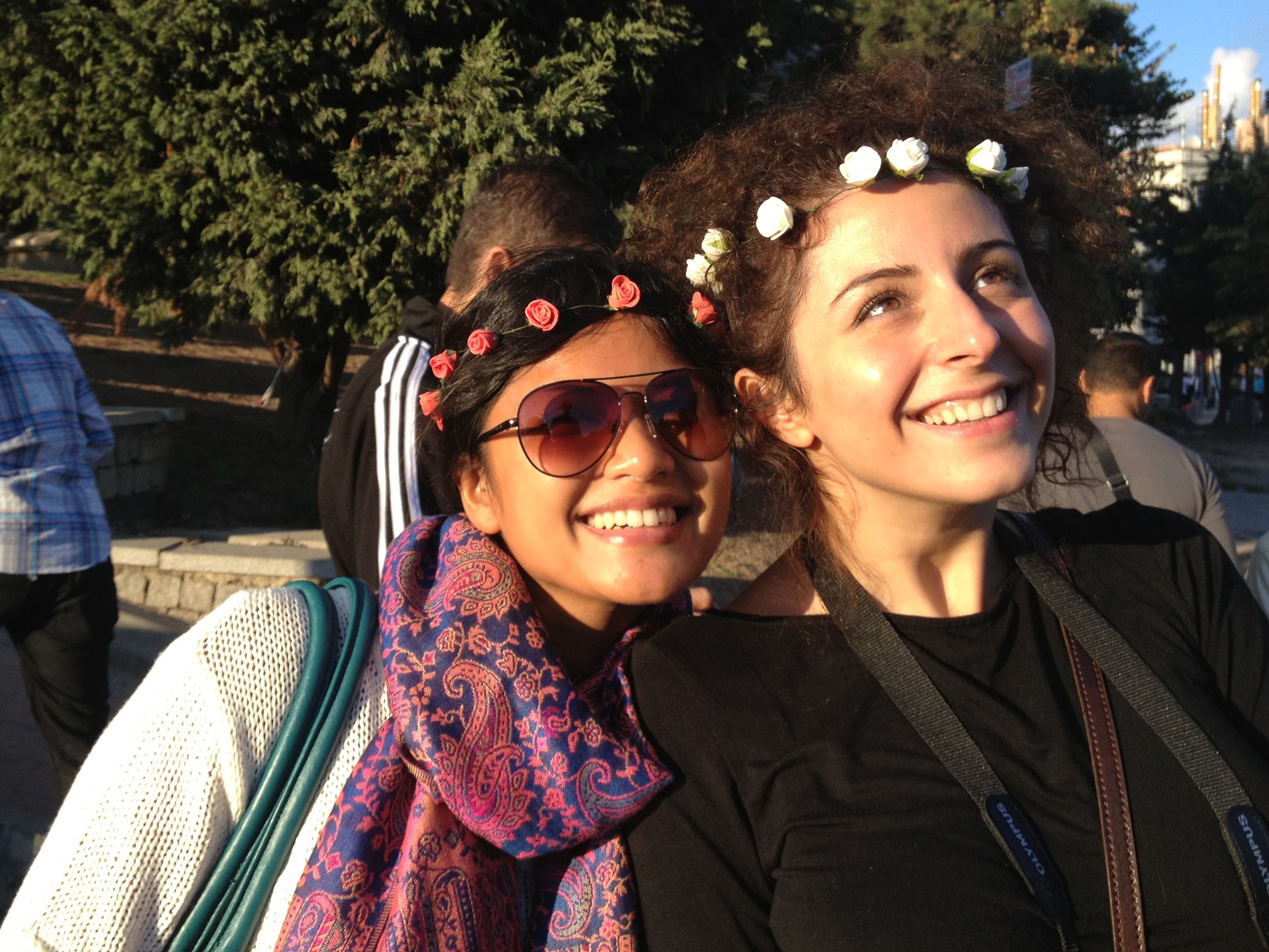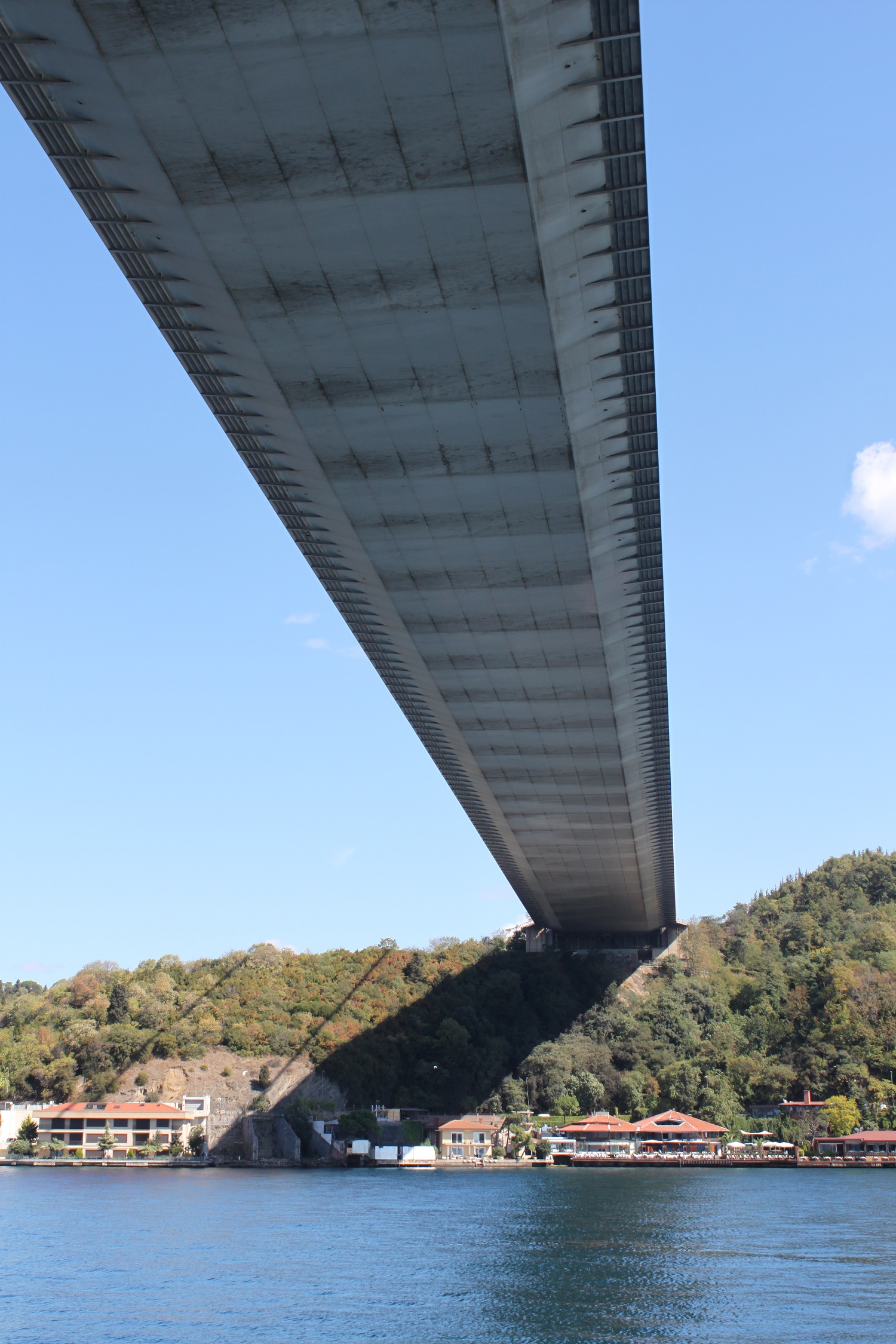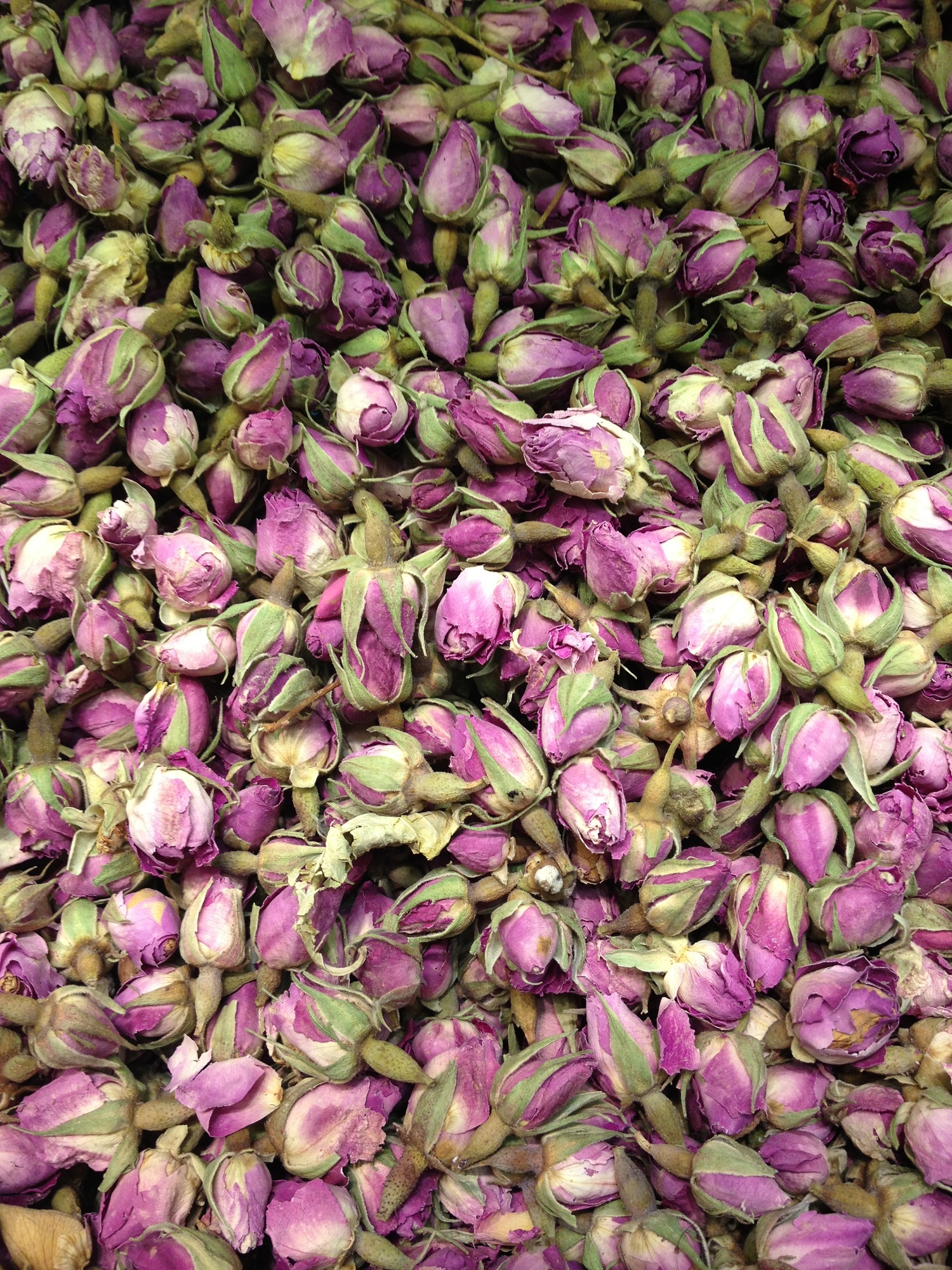istanbul
We arrived at the Istanbul airport around sunset Friday night. The hour-long bus ride in showed us a dense, seemingly never ending metropolis that we didn’t quite expect. I’d recently learned that Istanbul is home to 13.9 million people, not much smaller than the NYC metro area. From the elevated highway we saw multiple clusters of skyscrapers, neon signs, and buildings pressed tight against the highway that were more reminiscent of Tokyo or New York than anywhere in Europe. We got off the bus in Taksim Square and, after reading about all the protesting, tear-gassing and tent-burning that recently took place there, we were very curious and a little nervous. We walked into the square a saw a lot of… nothing. Taksim Square on this night was a huge expanse of blank concrete and little else. After spending time in public spaces like Dublin’s St. Stephen’s Green and Barcelona’s Plaza de Catalunya, Taksim Square was a little disappointing. That this is what people are fighting to save says a lot about the dire lack of public space in Istanbul.
After an attempted ripoff by our first cab driver (standard), we came to the neighborhood where we would be renting an apartment. Our place was just down the street from Galata Tower—a beautiful 14th century watchtower that is illuminated at night—in a bustling, trendy area full of young people. The open square around Galata Tower was a Friday night destination for quite a few people to meet up with friends and have a few Efes beers. After settling in and grabbing some quick durum for dinner (ubiquitous and disappointing shawarma wraps), we decided to wander the windy streets and see what a weekend night in Istanbul looked like. Before we knew it we were on literally the busiest pedestrian street either of us had ever seen. Istiklal Avenue is wide enough to be a major thoroughfare for cars and trams but instead it is 100% full of people, about 21 hours a day, every day. Most of the street is lined with teenagers hanging out behind formidable clusters of empty beer cans, and tourists and locals alike come here to party, shop or just people-watch. Along Istiklal you can find everything from fancy restaurants with New York prices and thumping nightclubs to hookah lounges full of backgammon players and kids selling questionable oysters off tables in the street. We were stunned at the sheer energy packed into this one Istanbul street. When we finally turned in we were completely exhausted, having driven from Sibiu, Romania, along the gorgeous (and high-stress) Transfagarasan Highway to Bucharest, flying to Istanbul, and exploring our new neighborhood all in the same day. Instead of sleeping we might have actually died for nine hours.
The next morning we set off to explore Beyoglu, the district where we were staying. This is the less old, more cosmopolitan part of the city (Galata Tower is “just” 650 years old) and it was full of leafy streets, coffee shops, restaurants and galleries. It was the perfect location for us to experience an interesting inner city neighborhood while still an easy walk to the major sights in the historic district. That night, Carla’s friend Sandy arrived at the apartment to join us for our next several days in Turkey. This was a completely spontaneous reunion that started with Carla’s offhand Facebook invitation at Dracula’s castle and ended with an awesome five days of exploring Turkey as a group. Carla and Sandy used to work together and quit the very same week for the sake of not working. Sandy had moved back to Lebanon, where she is from, and was able to find a cheap ticket to join us in Istanbul on short notice. We celebrated her arrival by trying one of the hookah lounges on Istiklal Avenue. At about 3:30 AM, after sharing two big hookahs, we were surprised to see Istiklal was still just as busy as it was at midnight. People were a little drunker and the crowd was a little younger but the street still had plenty of life left in it. I’d be surprised if it started clearing out before 6 or 7 AM that Saturday night.
On our third day in Istanbul we finally decided to check out the old city in the Golden Horn. Our first stop was the Hagia Sophia, an absolutely breathtaking testament to the power and ingenuity of earlier civilizations. The building was originally a cathedral built in the 6th century and was subsequently converted into a mosque. Today it is more of a monument and museum, with both Christian and Muslim aspects. Stepping into the main chamber you immediately slow down and your eyes float upwards toward the high windows and the dizzying unsupported dome. The idea that this beautiful, seemingly impossible feat of engineering was created almost 1500 years ago seems to stun visitors into silence. The fact that 900 year-old gold leaf mosaics (amazingly preserved) were completed 600 years after the construction of the building emphasizes how ancient the building is. Next we went to the Sultan Ahmet Mosque, also known as the Blue Mosque. This was equally stunning in a very different way. The exterior is a perfectly symmetrical stack of well-placed domes and towers creating an architectural masterpiece of the early 1600s. This competes with Barcelona’s Sagrada Familia and Milan’s Duomo as the most beautiful church I’ve ever seen. The inside was just as interesting as the outside. Sultan Ahmet Mosque is known as the Blue Mosque because the interior is covered in intricate blue tiles that create the feeling of standing inside a work of art. Combined with the stained glass windows and cavernous archways, this mosque seems to have the opposite effect of the Hagia Sophia. Instead of reverent silence, the crowded visitor area is full of people frantically taking pictures and exclaiming about details of the interior.
On our last day in Istanbul we decided to take the much-recommended (and cheap) Bosphorous boat tour. This was a 90-minute cruise along the strait that separates Europe from Asia and connects the Black Sea to the Atlantic Ocean. The boat ride really illustrates how large Istanbul is—after 45 minutes of heading northeast along the European side you realize you’re finally just about in the geographic center of the city, with countless high rises looming on all sides. Afterwards, Carla and Sandy spent the afternoon shopping at the crowded Grand Bazaar (I got my fill of this in Morocco’s medinas) while I wandered around Beyoglu and watched the locals at Galata Tower.
The three of us left the apartment at about 5:30 AM Tuesday morning in order to make an early flight to Cappadocia. We walked down Istiklal Avenue one last time on our way to the bus and, for the first time that we had seen, the street was finally clear. There were still a few Monday night drinkers and plenty of bakeries getting started for Tuesday, meaning Istiklal is never entirely quiet.
I didn’t really know what to expect from Istanbul but I was certainly surprised by this city. It is one of the world’s haphazard dense sprawls that, much like New York, Rio de Janeiro or Tokyo, seems to have about twice as many people as it knows what to do with. I love these kinds of places— magnets for an entire country that seem to draw many of the most interesting people. Certain areas felt very European (including western-style residential architecture and outdoor cafes) while other areas were uniquely Turkish (the fish markets and the Grand Bazaar). This modern city with history measured in millennia is a destination worth exploring.
// eurotrip to date: 8 flights, 3 buses, 5 trains, 1 ferry, 1 road trip, 8 countries
Sandy's first successful hookah - after several attempts!


